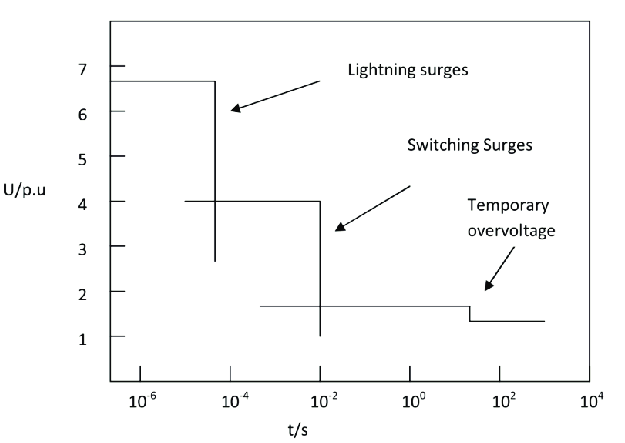LV – RELEASE
- The Low Voltage circuit breakers (<1000V) such as Molded-case circuit Breakers or LV power circuit breakers the sensing elements are an integral part of the circuit breaker.
- Fuse is both a sensing and interrupting device, but not a switching device. It is connected in series with the circuit and responds to thermal effects produced by the current flowing through it.
- Relayhas repeatability characteristics, which means that every pick-up will repeat at the same time, whereas Release has non-repeatability characteristics, with each pick-up error varying by 10%, 20%, or 30%.
- There are three different devices used to detect overcurrent. They are
- Thermal release– Protect from overload current
- It is consisting of Bi-metal strip which converts a temperature change (because of overload) into mechanical displacement (disconnect continuity of circuit).
- Bi-metal strip is inversely proportional to the intensity of the current.
- If current goes beyond the normal operating value, it will release the lock which holding the contacts.
- Magnetic release– Protect from Short circuit current
- It is a latching mechanism with a strong holding force and a quick, consistent, and dependable release.
- Bimetals and similar thermal elements in thermal magnetic trip units react directly to I2R heating.
- Electronic release– Protect from both overload and short-circuit current.
ELECTRONIC TRIP UNIT (ETU)

LONG TIME:
Its only for Over current protection and its trips on sustained overcurrent to protect conductors and other equipment.
The time delay provided allows intermittent or cyclical loads above the pickup current to be carried without interruption.
- LT Pick up
![]()
Over load Margin = 10% of FLA = 1.1
Safety Margin = 0 or 5% of FLA (our own decision)= 1.05
Minimum UV margin = 10% = 0.9
Tolerance (-ve/min) = -10% = 0.9
NOTE:
- The LT pick up set point will not guarantee that it will pick up between tolerance levels (min to max), but it will definitely pick up after the Max tolerance level or holding current.
Example: The image shows the characteristic curve of ABB SACE PR212, from 495.8 to 624 Amps, we cannot guarantee it will pick up between these amps but definitely it will pick up at 624.01 Amps.

- LT Band : Time can be either “Fixed” or “Adjustable” depends on the make and model of the breaker.

- LT Band setting should be as follows: For normal feeders, there should be clear discrimination(as per IEEE-242) and for motor, it should be above starting curve and below damage curve.

SHORT TIME:
- It is for Short-Circuit Protection and providing Backup for a downstream (main protection) in which opening time in seconds or tenth of seconds.
- Overcurrent might be in the range expected in the case of a motor locked rotor or an arcing ground fault. Time delay in this region allows for starting and inrush transinet currents or for selective coodination with supply side or load side devices.
- Short Time protection can perform with (IXt = IN) or without (Instantaneous, IXt = OUT) time delay.
- To avoid maloperation, use -ve tolerance for upstream (load side) and +ve tolerance for downstream (Incomer side).
- In some cases, short time also can use it as Instantaneous by selecting IXt = OUT.


- ST PICK UP:

- ST BAND: Set minimum discrimination as per IEEE 242 which is shown at end of this article.
INSTANTANEOUS:
- Instantaneous enable at End equipments like Motor and capacitor etc.

- If it is Motor then Locked rotor current with Asymmetrical factor is enough and other load like capacitor then starting current with safety margin & Maximum allowable overvoltage need to be considered. Tolerance factor should be considered for any kind of load.
- Asymmetrical factor means there is a possibility during breaker closing time current will not be in sinusoidal form. It is the combination of symmetrical component and direct current component of the current.
- It has no intentional time delay and its maximum time delay in milliseconds.
GROUND:
GROUND PICK UP:
- For LV Ground pickup, 20% of full load amps is required because LV loads are maximum unbalanced otherwise 10% of FLA is enough.
![]()
- GROUND BRAND:
- Set minimum discrimination of 100ms for motor followed by 200ms for back up protection.
- By enabling Ixt = INwill get Inverse curve and by keeping Ixt=OUT it is performing as Definite time.
- See the curve below, when it is Definite time 340A pick up at 80ms and at Inverse curve same 340A pick up at 1060ms.

MINIMUM COORDINATION TIME INTERVAL:
To ensure correct selective operation and to avoid maloperation there should be proper coordination between curves of different protective devices.

CSb – clear space between curves with upstream minimum-melting curve adjusted for pre-load.
CSc – some manufacturers may also recommend a safety factor.




good article